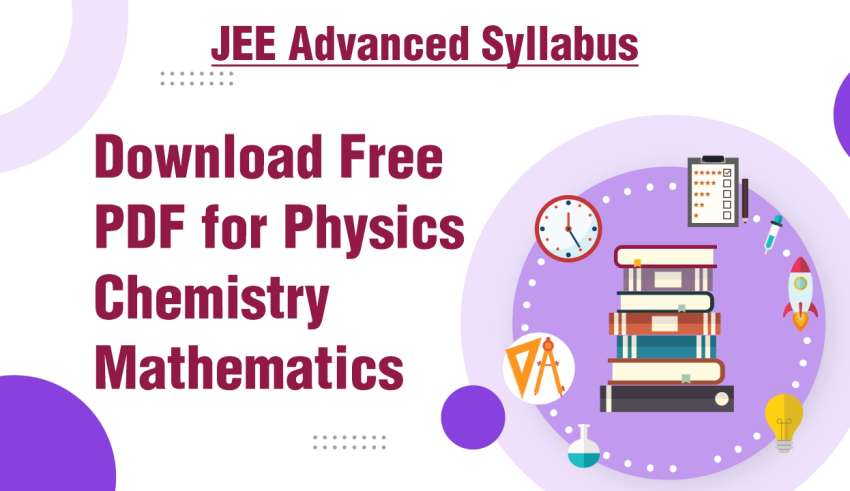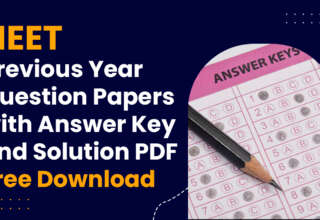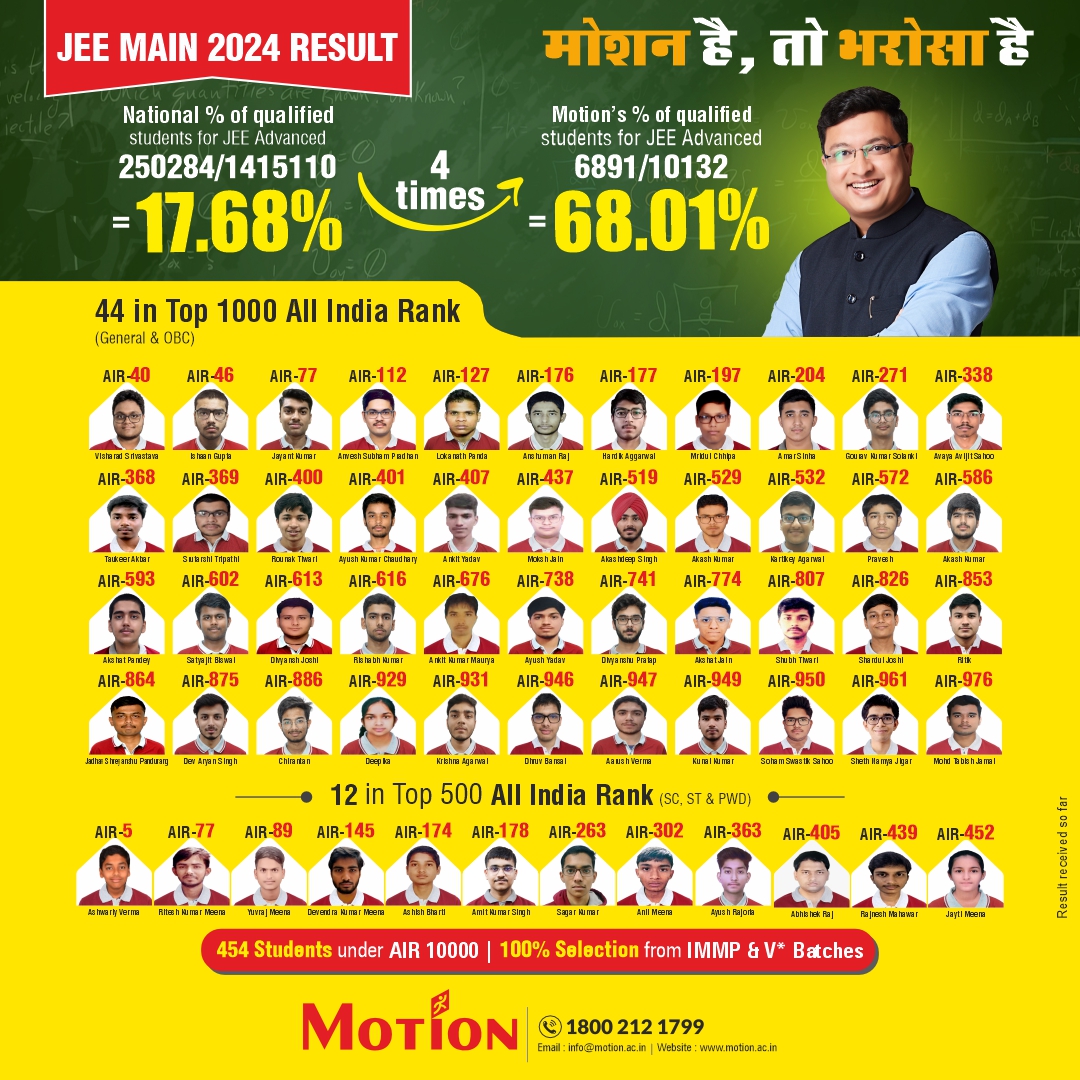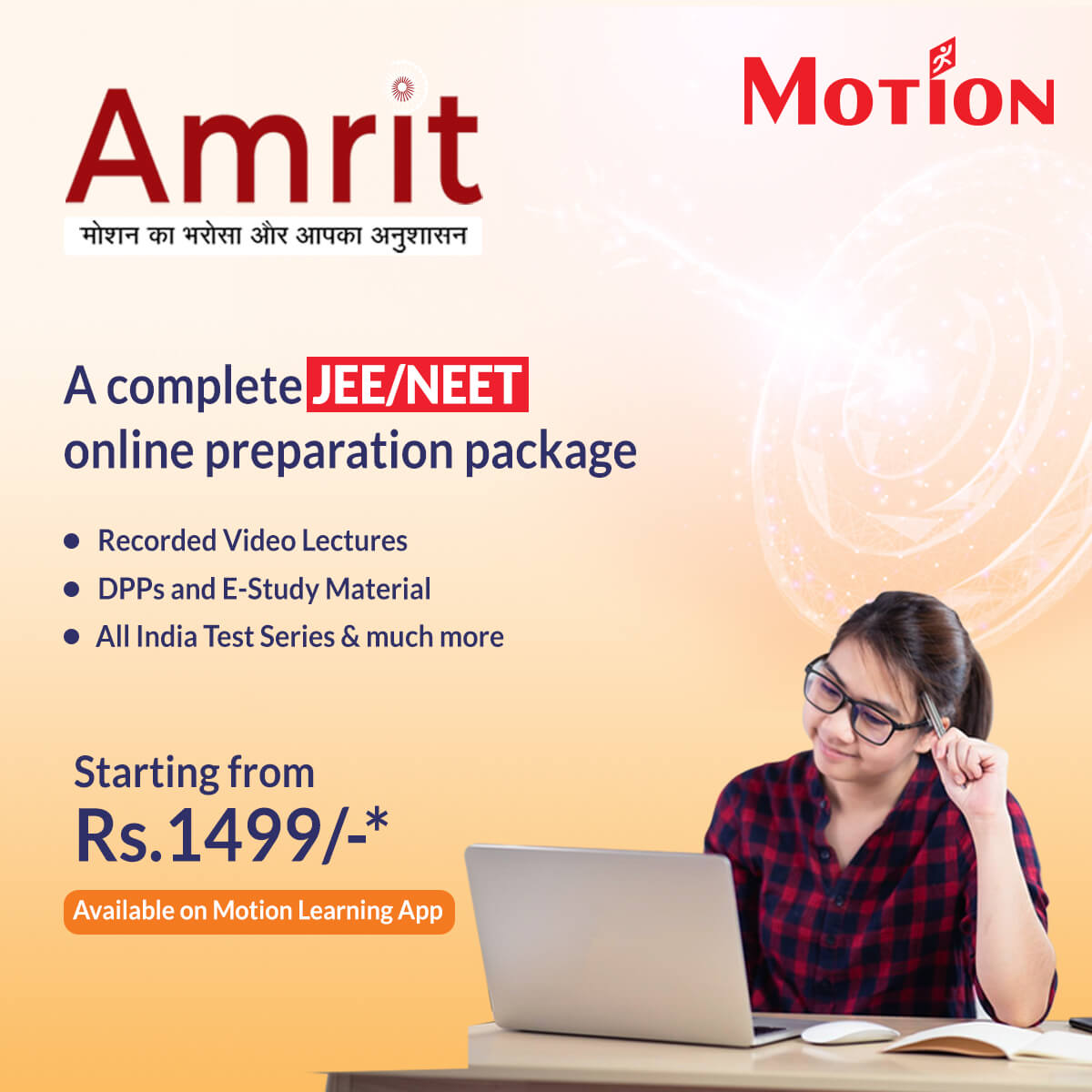
JEE Advanced Syllabus 2024 Download Free PDF for Physics, Chemistry, Mathematics: The JEE Advanced Syllabus 2024 is meticulously designed to assess candidates for IIT-level academic competence. JEE Advanced facilitates admission to undergraduate programs, including bachelor’s degrees, integrated master’s, and bachelor-master dual degrees in engineering, sciences, or architecture.
The JEE Advanced syllabus 2024 encompasses three core subjects: Physics, Chemistry, and Mathematics. The examination comprises two papers, each featuring questions from these subjects. Both papers have a duration of three hours, and it is mandatory for candidates to appear for both. The question papers are crafted to evaluate candidates’ comprehension, reasoning, and analytical skills.
Furthermore, it’s important to note that the JEE Advanced syllabus 2024 has undergone revision, and the updated syllabus details can be found below on this page, including downloadable PDFs.
JEE Advanced Syllabus 2024- Download PDF
The JEE Advanced Syllabus 2024 examination exclusively takes place in the Computer Based Test (CBT) mode. To become comfortable with this mode, candidates are strongly recommended to engage in mock tests accessible on the website. To gain insight into the subjects that will be assessed in the exam, you can access the JEE Advanced Syllabus 2024 PDF below. It is imperative for candidates to follow this syllabus diligently during their JEE Advanced syllabus preparation.
| Year | Download Syllabus PDF |
| JEE Advanced 2024 Syllabus | 2024 Syllabus PDF |
| JEE Advanced 2023 – Revised | Syllabus PDF |
| JEE Advanced 2022 – Old | Syllabus PDF |
JEE Advanced Syllabus 2024 for Chemistry
Chemistry is frequently perceived as more manageable than Mathematics and Physics. Nonetheless, it demands consistent practice to achieve mastery. Whether a topic or chapter originates from Class 11 or Class 12, it necessitates ongoing practice. As per the JEE Advanced syllabus Chemistry, approximately 30% to 40% of the content is drawn from Class 11 chapters, with the remainder stemming from Class 12 chapters. However, many of the Class 11 topics are foundational and play a crucial role in comprehending the Class 12 material. Download JEE Advanced Syllabus 2024 Chemistry.
Prospective candidates aiming to take (take with a grain of salt idiom synonym) the exam can review the JEE Advanced Syllabus 2024 Chemistry provided below:
| Chapters | Units |
|
Physical Chemistry |
|
| General topics | Concept of atoms and molecules; Dalton’s atomic theory; Mole concept; Chemical formulae; Balanced chemical equations; Calculations (based on mole concept) involving common oxidation-reduction, neutralization, and displacement reactions; Concentration in terms of mole fraction, molarity, molality and normality. |
| Gaseous and liquid states
|
Absolute scale of temperature, ideal gas equation; Deviation from ideality, van der Waals equation; Kinetic theory of gases, average, root mean square and most probable velocities and their relation with temperature; Law of partial pressures; Vapour pressure; Diffusion of gases. |
| Atomic structure and chemical bonding | Bohr model, spectrum of hydrogen atom, quantum numbers; Wave-particle duality, de Broglie hypothesis; Uncertainty principle; Qualitative quantum mechanical picture of hydrogen atom, shapes of s, p and d orbitals; Electronic configurations of elements (up to atomic number 36); Aufbau principle; Pauli’s exclusion principle and Hund’s rule; Orbital overlap and covalent bond; Hybridisation involving s, p and d orbitals only; Orbital energy diagrams for homonuclear diatomic species; Hydrogen bond; Polarity in molecules, dipole moment (qualitative aspects only); VSEPR model and shapes of molecules (linear, angular, triangular, square planar, pyramidal, square pyramidal, trigonal bipyramidal, tetrahedral and octahedral). |
| Energetics | First law of thermodynamics; Internal energy, work and heat, pressure-volume work; Enthalpy, Hess’s law; Heat of reaction, fusion and vapourization; Second law of thermodynamics; Entropy; Free energy; Criterion of spontaneity. |
| Chemical equilibrium | Law of mass action; Equilibrium constant, Le Chatelier’s principle (effect of concentration, temperature and pressure); Significance of ?G and ?G0 in chemical equilibrium; Solubility product, common ion effect, pH and buffer solutions; Acids and bases (Bronsted and Lewis concepts); Hydrolysis of salts. |
| Electrochemistry | Electrochemical cells and cell reactions; Standard electrode potentials; Nernst equation and its relation; Electrochemical series, emf of galvanic cells; Faraday’s laws of electrolysis; Electrolytic conductance, specific, equivalent and molar conductivity, Kohlrausch’s law; Concentration cells. |
| Chemical kinetics | Rates of chemical reactions; Order of reactions; Rate constant; First order reactions; Temperature dependence of rate constant (Arrhenius equation). |
| Solid state | Classification of solids, crystalline state, seven crystal systems (cell parameters a, b, c, alpha, beta, gamma), close packed structure of solids (cubic), packing in fcc, bcc and hcp lattices; Nearest neighbours, ionic radii, simple ionic compounds, point defects. |
| Solutions | Raoult’s law; Molecular weight determination from lowering of vapour pressure, elevation of boiling point and depression of freezing point. |
| Surface chemistry | Elementary concepts of adsorption (excluding adsorption isotherms); Colloids: types, methods of preparation and general properties; Elementary ideas of emulsions, surfactants and micelles (only definitions and examples). |
| Nuclear chemistry | Radioactivity: isotopes and isobars; Properties of alpha, Beta and Gamma rays; Kinetics of radioactive decay (decay series excluded), carbon dating; Stability of nuclei with respect to proton-neutron ratio; Brief discussion on fission and fusion reactions. |
|
Inorganic Chemistry |
|
| Isolation/preparation and properties of the following non-metals | Boron, silicon, nitrogen, phosphorus, oxygen, sulphur and halogens; Properties of allotropes of carbon (only diamond and graphite), phosphorus and sulphur. |
| Preparation and properties of the following compounds | Oxides, peroxides, hydroxides, carbonates, bicarbonates, chlorides and sulphates of sodium, potassium, magnesium and calcium; Boron: diborane, boric acid and borax; Aluminium: alumina, aluminium chloride and alums; Carbon: oxides and oxyacid (carbonic acid); Silicon: silicones, silicates and silicon carbide; Nitrogen: oxides, oxyacids and ammonia; Phosphorus: oxides, oxyacids (phosphorus acid, phosphoric acid) and phosphine; Oxygen: ozone and hydrogen peroxide; Sulphur: hydrogen sulphide, oxides, sulphurous acid, sulphuric acid and sodium thiosulphate; Halogens: hydrohalic acids, oxides and oxyacids of chlorine, bleaching powder; Xenon fluorides. |
| Transition elements (3d series) | Definition, general characteristics, oxidation states and their stabilities, colour (excluding the details of electronic transitions) and calculation of spin-only magnetic moment; Coordination compounds: nomenclature of mononuclear coordination compounds, cis-trans and ionisation isomerisms, hybridization and geometries of mononuclear coordination compounds (linear, tetrahedral, square planar and octahedral). |
| Preparation and properties of the following compounds | Oxides and chlorides of tin and lead; Oxides, chlorides and sulphates of Fe2+, Cu2+ and Zn2+; Potassium permanganate, potassium dichromate, silver oxide, silver nitrate, silver thiosulphate. |
| Ores and minerals | Commonly occurring ores and minerals of iron, copper, tin, lead, magnesium, aluminium, zinc and silver. |
| Extractive metallurgy | Chemical principles and reactions only (industrial details excluded); Carbon reduction method (iron and tin); Self reduction method (copper and lead); |
| Electrolytic reduction method (magnesium and aluminium); Cyanide process (silver and gold). | |
| Principles of qualitative analysis | Groups I to V (only Ag+, Hg2+, Cu2+, Pb2+, Bi3+, Fe3+, Cr3+, Al3+, Ca2+, Ba2+, Zn2+, Mn2+ and Mg2+); Nitrate, halides (excluding fluoride), sulphate and sulphide. |
|
Organic Chemistry |
|
| Concepts | Hybridisation of carbon; ? and ?-bonds; Shapes of simple organic molecules; Structural and geometrical isomerism; Optical isomerism of compounds containing up to two asymmetric centres, (R, S and E, Z nomenclature excluded); IUPAC nomenclature of simple organic compounds (only hydrocarbons, mono-functional and bi-functional compounds); Conformations of ethane and butane (Newman projections); Resonance and hyperconjugation; Keto-enoltautomerism; Determination of empirical and molecular formulae of simple compounds (only combustion method); Hydrogen bonds: definition and their effects on physical properties of alcohols and carboxylic acids; Inductive and resonance effects on acidity and basicity of organic acids and bases; Polarity and inductive effects in alkyl halides; Reactive intermediates produced during homolytic and heterolytic bond cleavage; Formation, structure and stability of carbocations, carbanions and free radicals. |
| Preparation, properties and reactions of alkanes | Homologous series, physical properties of alkanes (melting points, boiling points and density); Combustion and halogenation of alkanes; Preparation of alkanes by Wurtz reaction and decarboxylation reactions. |
| Preparation, properties and reactions of alkenes and alkynes | Physical properties of alkenes and alkynes (boiling points, density and dipole moments); Acidity of alkynes; Acid catalysed hydration of alkenes and alkynes (excluding the stereochemistry of addition and elimination); Reactions of alkenes with KMnO4 and ozone; Reduction of alkenes and alkynes; Preparation of alkenes and alkynes by elimination reactions; Electrophilic addition reactions of alkenes with X2, HX, HOX and H2O (X=halogen); Addition reactions of alkynes; Metal acetylides. |
| Reactions of benzene | Structure and aromaticity; Electrophilic substitution reactions: halogenation, nitration, sulphonation, Friedel-Crafts alkylation and acylation; Effect of o-, m- and p-directing groups in monosubstituted benzenes. |
| Phenols | Acidity, electrophilic substitution reactions (halogenation, nitration and sulphonation); Reimer-Tieman reaction, Kolbe reaction. |
| Characteristic reactions of the following (including those mentioned above) | Alkyl halides: rearrangement reactions of alkyl carbocation, Grignard reactions, nucleophilic substitution reactions; Alcohols: esterification, dehydration and oxidation, reaction with sodium, phosphorus halides, ZnCl2/concentrated HCl, conversion of alcohols into aldehydes and ketones; Ethers: Preparation by Williamson’s Synthesis; Aldehydes and Ketones: oxidation, reduction, oxime and hydrazone formation; aldol condensation, Perkin reaction; Cannizzaro reaction; haloform reaction and nucleophilic addition reactions (Grignard addition); Carboxylic acids: formation of esters, acid chlorides and amides, ester hydrolysis; Amines: basicity of substituted anilines and aliphatic amines, preparation from nitro compounds, reaction with nitrous acid, azo coupling reaction of diazonium salts of aromatic amines, Sandmeyer and related reactions of diazonium salts; carbylamine reaction; Haloarenes: nucleophilic aromatic substitution in haloarenes and substituted haloarenes (excluding Benzyne mechanism and Cine substitution). |
| Carbohydrates | Classification; mono- and di-saccharides (glucose and sucrose); Oxidation, reduction, glycoside formation and hydrolysis of sucrose. |
| Amino acids and peptides | General structure (only primary structure for peptides) and physical properties |
| Properties and uses of some important polymers | Natural rubber, cellulose, nylon, teflon and PVC.
|
| Practical organic chemistry | Detection of elements (N, S, halogens); Detection and identification of the following functional groups: hydroxyl (alcoholic and phenolic), carbonyl (aldehyde and ketone), carboxyl, amino and nitro; Chemical methods of separation of monofunctional organic compounds from binary mixtures. |
JEE Advanced Syllabus 2024 for Mathematics
Mathematics holds significant importance in the context of JEE Advanced syllabus 2024. Engineering aspirants should emphasize the study of its diverse topics starting from earlier classes. This approach aids in grasping intricate concepts in advanced coursework. The chapters covered in Class 11 serve as the building blocks for Class 12 content. Consequently, Class 11 mathematics topics account for a substantial 40% to 50% of the syllabus, making them indispensable. Download JEE Advanced 2024 Syllabus Mathematics
For candidates preparing to take the exam, the JEE Advanced syllabus Mathematics is available for review below:
| Chapters | Units |
| Algebra | Algebra of complex numbers, addition, multiplication, conjugation, polar representation, properties of modulus and principal argument, triangle inequality, cube roots of unity, geometric interpretations. |
| Quadratic equations with real coefficients, relations between roots and coefficients, formation of quadratic equations with given roots, symmetric functions of roots. Arithmetic, geometric and harmonic progressions, arithmetic, geometric and harmonic means, sums of finite arithmetic and geometric progressions, infinite geometric series, sums of squares and cubes of the first n natural numbers. | |
| Logarithms and their properties. | |
| Permutations and combinations, binomial theorem for a positive integral index, properties of binomial coefficients. | |
| Matrices | Matrices as a rectangular array of real numbers, equality of matrices, addition, multiplication by a scalar and product of matrices, transpose of a matrix, determinant of a square matrix of order up to three, inverse of a square matrix of order up to three, properties of these matrix operations, diagonal, symmetric and skew-symmetric matrices and their properties, solutions of simultaneous linear equations in two or three variables. |
| Probability
|
Addition and multiplication rules of probability, conditional probability, Bayes Theorem, independence of events, computation of probability of events using permutations and combinations. |
| Trigonometry
|
Trigonometric functions, their periodicity and graphs, addition and subtraction formulae, formulae involving multiple and sub-multiple angles, general solution of trigonometric equations. |
| Relations between sides and angles of a triangle, sine rule, cosine rule, half-angle formula and the area of a triangle, inverse trigonometric functions (principal value only). | |
| Analytical geometry | Two dimensions: Cartesian coordinates, distance between two points, section formulae, shift of origin. |
| Equation of a straight line in various forms, angle between two lines, distance of a point from a line; Lines through the point of intersection of two given lines, equation of the bisector of the angle between two lines, concurrency of lines; Centroid, orthocentre, incentre and circumcentre of a triangle. | |
| Equation of a circle in various forms, equations of tangent, normal and chord. Parametric equations of a circle, intersection of a circle with a straight line or a circle, equation of a circle through the points of intersection of two circles and those of a circle and a straight line. | |
| Equations of a parabola, ellipse and hyperbola in standard form, their foci, directrices and eccentricity, parametric equations, equations of tangent and normal. Locus problems. | |
| Three dimensions: Direction cosines and direction ratios, equation of a straight line in space, equation of a plane, distance of a point from a plane. | |
| Differential calculus | Real valued functions of a real variable, into, onto and one-to-one functions, sum, difference, product and quotient of two functions, composite functions, absolute value, polynomial, rational, trigonometric, exponential and logarithmic functions. Limit and continuity of a function, limit and continuity of the sum, difference, product and quotient of two functions, L’Hospital rule of evaluation of limits of functions. |
| Even and odd functions, inverse of a function, continuity of composite functions, intermediate value property of continuous functions. | |
| Derivative of a function, derivative of the sum, difference, product and quotient of two functions, chain rule, derivatives of polynomial, rational, trigonometric, inverse trigonometric, exponential and logarithmic functions. | |
| Derivatives of implicit functions, derivatives up to order two, geometrical interpretation of the derivative, tangents and normals, increasing and decreasing functions, maximum and minimum values of a function, Rolle’s theorem and Lagrange’s mean value theorem. | |
| Integral calculus | Integration as the inverse process of differentiation, indefinite integrals of standard functions, definite integrals and their properties, fundamental theorem of integral calculus. |
| Integration by parts, integration by the methods of substitution and partial fractions, application of definite integrals to the determination of areas involving simple curves. | |
| Formation of ordinary differential equations, solution of homogeneous differential equations, separation of variables method, linear first-order differential equations. | |
| Vectors | Addition of vectors, scalar multiplication, dot and cross products, scalar triple products and their geometrical interpretations. |
JEE Advanced Syllabus 2024 for Physics
Physics revolves around understanding concepts and their practical applications. Mere memorization of key formulas is not an effective approach to success in this subject. Candidates should focus on comprehending each concept thoroughly and then applying them appropriately. Download JEE Advanced Syllabus 2024 for Physics
For those aiming to take the exam, the IIT JEE Advanced syllabus 2024 for Physics is provided below for reference:
| Chapters | Units |
| General | Units and dimensions, dimensional analysis; least count, significant figures; Methods of measurement and error analysis for physical quantities pertaining to the following experiments: Experiments based on using Vernier calipers and screw gauge (micrometer), Determination of g using simple pendulum, Young’s modulus by Searle’s method, Specific heat of a liquid using calorimeter, focal length of a concave mirror and a convex lens using u-v method, Speed of sound using resonance column, Verification of Ohm’s law using voltmeter and ammeter, and specific resistance of the material of a wire using meter bridge and post office box. |
| Mechanics | Kinematics in one and two dimensions (Cartesian coordinates only), projectiles; Uniform circular motion; Relative velocity. |
| Newton’s laws of motion; Inertial and uniformly accelerated frames of reference; Static and dynamic friction; Kinetic and potential energy; Work and power; Conservation of linear momentum and mechanical energy. | |
| Systems of particles; Centre of mass and its motion; Impulse; Elastic and inelastic collisions. | |
| Law of gravitation; Gravitational potential and field; Acceleration due to gravity; Motion of planets and satellites in circular orbits; Escape velocity. | |
| Rigid body, moment of inertia, parallel and perpendicular axes theorems, moment of inertia of uniform bodies with simple geometrical shapes; Angular momentum; | |
| Torque; Conservation of angular momentum; Dynamics of rigid bodies with fixed axis of rotation; Rolling without slipping of rings, cylinders and spheres; Equilibrium of rigid bodies; Collision of point masses with rigid bodies. | |
| Linear and angular simple harmonic motions. | |
| Hooke’s law, Young’s modulus. | |
| Pressure in a fluid; Pascal’s law; Buoyancy; Surface energy and surface tension, capillary rise; Viscosity (Poiseuille’s equation excluded), Stoke’s law; Terminal velocity, Streamline flow, equation of continuity, Bernoulli’s theorem and its applications. | |
| Wave motion (plane waves only), longitudinal and transverse waves, superposition of waves; Progressive and stationary waves; Vibration of strings and air columns; Resonance; Beats; Speed of sound in gases; Doppler effect (in sound). | |
| Thermal physics
|
Thermal expansion of solids, liquids and gases; Calorimetry, latent heat; Heat conduction in one dimension; Elementary concepts of convection and radiation; Newton’s law of cooling; Ideal gas laws; Specific heats (Cv and Cp for monoatomic and diatomic gases); Isothermal and adiabatic processes, bulk modulus of gases; Equivalence of heat and work; First law of thermodynamics and its applications (only for ideal gases); Blackbody radiation: absorptive and emissive powers; Kirchhoff’s law; Wien’s displacement law, Stefan’s law. |
| Electricity and magnetism | Coulomb’s law; Electric field and potential; Electrical potential energy of a system of point charges and electrical dipoles in a uniform electrostatic field; Electric field lines; Flux of electric field; Gauss’s law and its application in simple cases, such as, to find field due to infinitely long straight wire, uniformly charged infinite plane sheet and uniformly charged thin spherical shell. |
| Capacitance; Parallel plate capacitor with and without dielectrics; Capacitors in series and parallel; Energy stored in a capacitor. | |
| Electric current; Ohm’s law; Series and parallel arrangements of resistances and cells; Kirchhoff’s laws and simple applications; Heating effect of current. | |
| Biot–Savart’s law and Ampere’s law; Magnetic field near a current-carrying straight wire, along the axis of a circular coil and inside a long straight solenoid; Force on a moving charge and a current-carrying wire in a uniform magnetic field. | |
| Magnetic moment of a current loop; Effect of a uniform magnetic field on a current loop; Moving coil galvanometer, voltmeter, ammeter and their conversions. Electromagnetic induction: Faraday’s law, Lenz’s law; Self and mutual inductance; RC, LR and LC circuits with d.c. and a.c. sources. | |
| Optics | Rectilinear propagation of light; Reflection and refraction at plane and spherical surfaces; Total internal reflection; Deviation and dispersion of light by a prism; Thin lenses; Combinations of mirrors and thin lenses; Magnification. |
| Wave nature of light: Huygen’s principle, interference limited to Young’s double-slit experiment. | |
| Modern physics | Atomic nucleus; Alpha, Beta and Gamma radiations; Law of radioactive decay; Decay constant; Half-life and mean life; Binding energy and its calculation; Fission and fusion processes; Energy calculation in these processes. |
| Photoelectric effect; Bohr’s theory of hydrogen-like atoms; Characteristic and continuous X-rays, Moseley’s law; de Broglie wavelength of matter waves. |
Important Topics from JEE Advanced Syllabus 2024
While it’s important to cover all the chapters and topics listed in the syllabus, there are specific subjects that hold greater significance in the exam. These are the chapters regarded as critical in the JEE Advanced syllabus, often described as ‘make or break’ areas. Consequently, make sure to identify these crucial topics for the JEE Advanced syllabus 2024 and prioritize them without fail.
JEE Advanced syllabus 2024 important topics in Physics
| Unit and topic name | Total number of questions | Total marks | (%) Weightage |
| Physics | 38 | 120 | 100% |
| Electrodynamics | 12 | 34 | 28% |
| Alternating Current | 2 | 4 | 3% |
| Capacitance | 2 | 4 | 3% |
| Current Electricity | 1 | 4 | 3% |
| Electro Magnetic Field | 2 | 8 | 7% |
| Electro Magnetic Induction | 3 | 10 | 8% |
| Electrostatics | 2 | 4 | 3% |
| Heat & Thermodynamics | 4 | 13 | 11% |
| Heat Transfer | 1 | 4 | 3% |
| KTG & Thermodynamics | 3 | 9 | 8% |
| Mechanics | 14 | 43 | 36% |
| Centre of Mass | 4 | 8 | 7% |
| Error in Measurement | 1 | 3 | 3% |
| Fluid Mechanics & Properties of Matter | 3 | 8 | 7% |
| Gravitation | 1 | 4 | 3% |
| Rigid Body Dynamics | 4 | 16 | 13% |
| Unit & Dimension | 1 | 4 | 3% |
| Modern Physics | 4 | 15 | 13% |
| Modern Physics | 2 | 8 | 7% |
| Nuclear Physics | 2 | 7 | 6% |
| Optics | 3 | 11 | 9% |
| Geometrical Optics & Physical Optics | 3 | 11 | 9% |
| SHM & Waves | 1 | 4 | 3% |
| Sound Waves | 1 | 4 | 3% |
JEE Advanced Syllabus 2024 Important Topics in Chemistry
| Unit and topic name | Total number of questions | Total marks | (%) Weightage |
| Chemistry | 38 | 120 | 100% |
| Inorganic Chemistry-II | 9 | 33 | 28% |
| Coordination Compounds | 3 | 11 | 9% |
| Metallurgy | 1 | 4 | 3% |
| Qualitative Analysis | 3 | 10 | 8% |
| p-Block 17-18 Group | 1 | 4 | 3% |
| p-block (15-16 Grp) | 1 | 4 | 3% |
| Organic Chemistry-I | 2 | 8 | 7% |
| Hydrocarbon | 1 | 4 | 3% |
| Practical Organic Chemistry | 1 | 4 | 3% |
| Organic Chemistry-II | 10 | 32 | 27% |
| Aromatic Compounds | 3 | 12 | 10% |
| Biomolecules | 1 | 4 | 3% |
| Hydrocarbon (Alkane, Alkene & Alkyne) | 3 | 9 | 8% |
| Stereoisomerism | 1 | 3 | 3% |
| Aldehyde Ketone | 2 | 4 | 3% |
| Physical Chemistry-I | 9 | 24 | 20% |
| Atomic Structure & Nuclear Chemistry | 1 | 4 | 3% |
| Chemical Equilibrium | 2 | 4 | 3% |
| Equivalent Concept | 4 | 8 | 7% |
| Thermodynamics and Thermochemistry | 2 | 8 | 7% |
| Physical Chemistry-II | 8 | 23 | 19% |
| Chemical Kinetics | 1 | 4 | 3% |
| Electrochemistry | 3 | 8 | 7% |
| Solid State | 1 | 3 | 3% |
| Surface Chemistry | 1 | 4 | 3% |
| Solution & Colligative Properties | 2 | 4 | 3% |
JEE Advanced Syllabus 2024 Important Topics in Maths
| Unit and topic name | Total number of questions | Total marks | (%) Weightage |
| Mathematics | 38 | 120 | 100% |
| Complex Numbers | 2 | 7 | 6% |
| Complex Numbers | 2 | 7 | 6% |
| Coordinate Geometry | 9 | 25 | 21% |
| Circle | 3 | 9 | 8% |
| Ellipse | 1 | 4 | 3% |
| Parabola | 3 | 8 | 7% |
| Straight Line | 2 | 4 | 3% |
| Differential Calculus | 3 | 8 | 7% |
| Application of Derivatives | 3 | 8 | 7% |
| Fundamentals of Mathematics | 1 | 4 | 3% |
| Fundamentals of Mathematics | 1 | 4 | 3% |
| Integral Calculus | 8 | 25 | 21% |
| Area under curve | 1 | 3 | 3% |
| Definite integration | 6 | 18 | 15% |
| Differential equation | 1 | 4 | 3% |
| Matrix & Determinants | 4 | 12 | 10% |
| Matrices & Determinants | 4 | 12 | 10% |
| Permutation & Combination | 1 | 4 | 3% |
| Permutation & Combination | 1 | 4 | 3% |
| Probability | 5 | 15 | 13% |
| Probability | 5 | 15 | 13% |
| Trigonometry | 3 | 12 | 10% |
| Inverse Trigonometric function | 1 | 4 | 3% |
| Solution of Triangle | 1 | 4 | 3% |
| Trigonometric Ratio & identities | 1 | 4 | 3% |
| Vector and 3D | 2 | 8 | 7% |
| Vector | 2 | 8 | 7% |
Understanding JEE Advanced Syllabus 2024 Exam Pattern
In addition to the syllabus, it is crucial for candidates to have a clear understanding of the examination pattern and question paper structure for JEE Advanced syllabus 2024:
JEE Advanced syllabus 2024 will comprise two question papers: Paper 1 and Paper 2, each lasting for three hours. It is mandatory for candidates to appear for both papers.
Each question paper will be divided into three distinct sections, namely Physics, Chemistry, and Mathematics.
Some questions may incur negative marks for incorrect responses. Detailed information regarding the marking scheme will be provided in the “Instructions to Candidates” section during the examination. Candidates must carefully read and follow the comprehensive instructions provided in the question papers available at the time (race against time phrase meaning) of the exam.
The question papers will be available in both English and Hindi languages. Candidates will have the flexibility to select and switch between their preferred language options throughout the examination. In case of any discrepancies, the English version will take precedence.
The total duration for each paper in the JEE Advanced syllabus 2024 examination is three hours (180 minutes), except for PwD (Persons with Disabilities) candidates who have chosen compensatory time, for whom the duration is extended to four hours (240 minutes).
Important JEE Advanced Syllabus 2024 Books
Candidates should be aware of the most recommended books that comprehensively cover the entire JEE Advanced syllabus 2024. To enhance their preparation, candidates should consult the top-rated books tailored for JEE Advanced syllabus 2024. Once the syllabus has been thoroughly covered, candidates can embark on solving previous years’ JEE Advanced question papers. The following table provides a selection of some of the highly regarded books for this purpose.
JEE Advanced Syllabus 2024 Books for Chemistry:
- Physical Chemistry by O P Tandon
- Organic Chemistry by O P Tandon
- Inorganic Chemistry by O P Tandon
- Organic Chemistry by Paula Bruice Yurkanis
- Organic Chemistry by Morrison & Boyd
- Inorganic Chemistry by J D Lee
JEE Advanced syllabus 2024 books for Maths:
- Integral Calculus for IIT-JEE by Amit M Agarwal (Arihant Publications)
- A Text-Book of Algebra For JEE Main & Advanced by Dr S K Goyal (Arihant Publications)
- Problems in Calculus Of One Variable by I A Maron
- Plane Trigonometry and Coordinate Geometry (Two Books) by S L Loney
- Objective Mathematics By R D Sharma
JEE Advanced syllabus 2024 books for Physics:
- Concepts of Physics by H C Verma (Vol-1 and Vol-2)
- Fundamentals of Physics by David Halliday/Resnick/Walker
- IIT JEE Physics by Arihant
- Problems in General Physics by I E Irodov
How to Prepare using JEE Advanced Syllabus 2024?
When examining the JEE Advanced syllabus 2024, candidates may initially feel overwhelmed. However, to ensure their preparation is well-structured rather than haphazard, candidates must formulate a plan. Here’s how to effectively prepare using the JEE Advanced Syllabus 2024:
Strategic Starting Point: Avoid starting randomly. Begin by categorizing topics into two groups: those deemed important and those less important. Then, assess your personal strengths and weaknesses among these topics. Armed with these categories, initiate your preparation in the following order:
- Important and weak topics
- Important and strong topics
- Less important and weak topics
- Less important and strong topics
Comprehensive Coverage: While certain topics hold greater significance, remember that all topics in the syllabus must be addressed. JEE Advanced is an unconventional examination with questions spanning across all areas.
Syllabus Adherence: Focus solely on practicing topics within the prescribed syllabus. Avoid venturing beyond this scope to prevent time wastage.
Timely Syllabus Completion: Avoid procrastination. Strive to cover all syllabus topics at least once in a timely manner. Once the syllabus is completed, shift your focus toward strategic topic revision.
Frequently Asked Questions: JEE Advanced Syllabus 2024
Q: Is it necessary to cover the entire syllabus for JEE Advanced, or is focusing on specific chapters sufficient?
Ans: To excel in the JEE Advanced exam, it is imperative to thoroughly cover the entire syllabus. This exam is designed to assess your knowledge across all topics in Physics, Chemistry, and Mathematics. Given its reputation for being both challenging and competitive, a solid foundation in all syllabus topics is essential. Nevertheless, certain topics and chapters carry greater weight in the JEE Advanced exam, categorized by subject:
Physics:
Mechanics: Topics like Newton’s laws of motion, work-energy theorem, impulse and momentum, and rotational dynamics are fundamental and underpin many other physics concepts.
Electricity and Magnetism: This encompasses electrostatics, capacitors, current electricity, magnetic effects of current, and electromagnetic induction, which have practical applications and extensive exam coverage.
Optics and Waves: Both of these topics are significant in the JEE Advanced curriculum.
Chemistry:
Organic Chemistry: Topics like hydrocarbons, alcohols, phenols, aldehydes and ketones, carboxylic acids, and amines are crucial, as they have practical applications and are extensively tested.
Inorganic Chemistry: This includes the periodic table, chemical bonding, coordination compounds, p-block elements, and metallurgy, which are fundamental and frequently assessed.
Physical Chemistry: Topics such as thermodynamics, chemical equilibrium, electrochemistry, and chemical kinetics form the core of chemistry and are extensively tested.
Mathematics:
Calculus: Covers limits and continuity, derivatives, integration, and applications, with significant practical applications and extensive exam coverage.
Algebra: Complex numbers, quadratic equations, inequalities, sequences and series, permutations and combinations, binomial theorem, matrices and determinants are foundational topics.
Coordinate Geometry: Straight lines, circles, and conic sections are vital with practical applications and substantial exam representation.
While these topics hold greater weight, it’s still essential to have a solid grasp of all syllabus subjects to perform well in the JEE Advanced exam. Prioritizing frequently asked and challenging topics can help you allocate your time and resources efficiently. However, ensure you maintain a strong understanding of all subjects, as the exam may contain unexpected questions or require novel applications of concepts. It’s advisable to follow a structured study plan that covers the entire syllabus while dedicating sufficient time to important and challenging topics. Additionally, practicing past papers and mock exams can enhance your familiarity with typical question types and improve your exam-taking skills.
Q: How many chapters should be covered for JEE Advanced during fast revision?
Ans: For a fast revision of JEE Advanced, focus on these chapters:
Physics: Mechanics, Electricity and Magnetism, Optics, Waves, Thermodynamics, Modern Physics.
Chemistry: Physical Chemistry (Mole Concept, Atomic Structure, Chemical Bonding, Thermodynamics), Organic Chemistry (Basic Principles, Hydrocarbons, Alcohols, Phenols, Ethers, Aldehydes, Ketones, Carboxylic Acids, Amines), Inorganic Chemistry (Periodic Table, Chemical Bonding, Coordination Compounds, p-Block Elements, d-Block Elements).
Mathematics: Algebra (Quadratic Equations, Sequences and Series, Permutations and Combinations, Complex Numbers), Calculus (Limits, Continuity and Differentiability, Application of Derivatives, Indefinite and Definite Integrals), Differential Equations, Coordinate Geometry (Straight Lines, Circles, Parabola, Ellipse, Hyperbola), Vectors and 3D Geometry, Probability.
Q: Is it sufficient to rely on PW modules and PYQs for JEE Advanced preparation in the last month?
Ans: Depending solely on PW (Practice Workbook) modules and PYQs (Previous Year Questions) for JEE Advanced preparation in the last month may not be enough. While these resources are valuable for reviewing key concepts and practicing exam-style questions, success in the JEE Advanced exam depends on several factors.
Factors that influence your performance include your existing knowledge and understanding of the material, the amount of time you can dedicate to studying, your study habits and strategies, and your ability to handle the pressure of the exam. While PW modules and PYQs can serve as effective tools for revision and self-assessment, it’s essential to complement them with other study materials.
Consider incorporating textbooks, additional practice exams, online resources, and comprehensive study guides into your preparation plan. This approach will provide you with a more well-rounded understanding of the exam material and better prepare you for the challenges of the JEE Advanced exam.
In summary, while PW modules and PYQs are valuable resources, a comprehensive and varied study approach is recommended for JEE Advanced preparation in the last month. Diligent preparation, effective study strategies, and a positive mindset are key components of success in this highly competitive exam. Good luck with your studies!
Q: What is the examination pattern for JEE Advanced?
Ans: The examination pattern for the Joint Entrance Examination Advanced (JEE Advanced) undergoes annual variations. JEE Advanced comprises two papers: Paper 1 and Paper 2, both encompassing three distinct sections focusing on Chemistry, Physics, and Mathematics. Negative marking is applicable for incorrect answers in the JEE Advanced exam. The medium of examination is available in both English and Hindi. The primary examination is conducted online through a Computer-Based Test (CBT).
Key features of the JEE Advanced examination pattern include:
JEE Advanced consists of two papers, namely Paper 1 and Paper 2, and candidates are required to appear for both papers.
Each paper is divided into three sections: Chemistry, Physics, and Mathematics.
In both Paper 1 and Paper 2, each section is further divided into three parts:
Section 1: This part contains 8 questions, each requiring a numerical value as an answer. Candidates input the correct numerical value using an on-screen virtual numeric keypad.
Scoring: Full Marks (3 marks) are awarded for each correct numerical value. Zero marks are given for incorrect or unattempted questions.
Section 2: This part comprises six questions, with each question having four options. Multiple options may be correct for some questions, and candidates need to select all correct options.
Scoring: Full Marks (4 marks) are awarded for each correct option selected. Partial marks (3 marks) are given if all correct options are chosen, but only three options are selected. Partial marks (2 marks) are awarded if three or more correct options are chosen, but only two of them are correct. A single correct option chosen results in partial marks (1 mark). No marks are awarded if none of the options is selected.
Section 3: This part contains 4 Matching List Sets, with each set comprising one multiple-choice question (MCQ). Each set has two lists: List-1 and List-2, each containing multiple entries. Candidates must select the correct combination from the options provided based on List-1 and List-2.
Scoring: Full Marks (3 marks) are awarded if the option corresponding to the correct combination is chosen. Zero marks are given if none of the options is selected. A negative mark (1 mark deduction) is applicable in all other cases.
This comprehensive overview outlines the examination pattern for JEE Advanced, which includes numerical value-based questions, multiple correct options, and matching list sets in its question format.
Q: How should I prepare for JEE Advanced?
Ans: Here are some effective preparation tips for the JEE Advanced exam:
Start with NCERT Books: Begin your preparation with NCERT books, which are authored by some of India’s brightest minds and provide concise and precise content. Read these books thoroughly and complete all the exercises and illustration problems. Remember that simply reading NCERT books is not enough; understanding the concepts is crucial.
Balance Board Examinations: While Class XII marks are no longer considered for JEE Main and Advanced rank determination, performing well in the board examinations is still important. Good preparation for the board exams can also benefit your JEE Main preparation. Board exams often have subjective questions, so practice answering them.
Focus on Understanding: It’s essential to understand the concepts rather than rote learning formulas and equations. Developing a clear understanding of the subjects is more beneficial than memorization.
Create a Weekly Study Plan: Instead of daily plans, consider creating a weekly study plan. This allows flexibility to make up for any missed study sessions due to unexpected events. Ensure that your weekly plan is achievable within that time frame.
Learn from Test Mistakes: Regularly take mock tests in a format similar to JEE Main and JEE Advanced. Learning from your mistakes in these mock tests is crucial. Gradually, as you correct your errors, your performance will improve, and you’ll become more accustomed to the test format.
Avoid Accumulating Too Many Books: Instead of studying from multiple sources, focus on completing one good book thoroughly. Avoid collecting study materials from various institutions, as they may prioritize certain content while neglecting others. The new exam pattern expects you to have a comprehensive understanding of each subject.
Cover the Entire Syllabus: Ensure that you cover the entire JEE Main and JEE Advanced syllabus. While some questions may test your ability to apply concepts creatively, they are all derived from the syllabus. Studying content outside the syllabus can be counterproductive.
Develop a Revision Strategy: Create a study schedule that suits your learning style. Avoid making major changes to your study routine close to the exam date, as it can lead to confusion and forgetfulness. Aim to revise two subjects daily to retain your knowledge effectively.
Recommended Books for JEE Advanced 2024:
NCERT Textbooks
- Concepts of Physics Vol I and II by H.C. Verma (Highly Recommended)
- Fundamentals of Physics by Halliday, Resnick & Walker
- Problems in General Physics by I.E. Irodov
- IIT Physics by D.C. Pandey
- Problems in Physics by S.S. Krotov
By following these tips and maintaining a disciplined study routine, you can enhance your preparation for the JEE Advanced exam and increase your chances of success.












